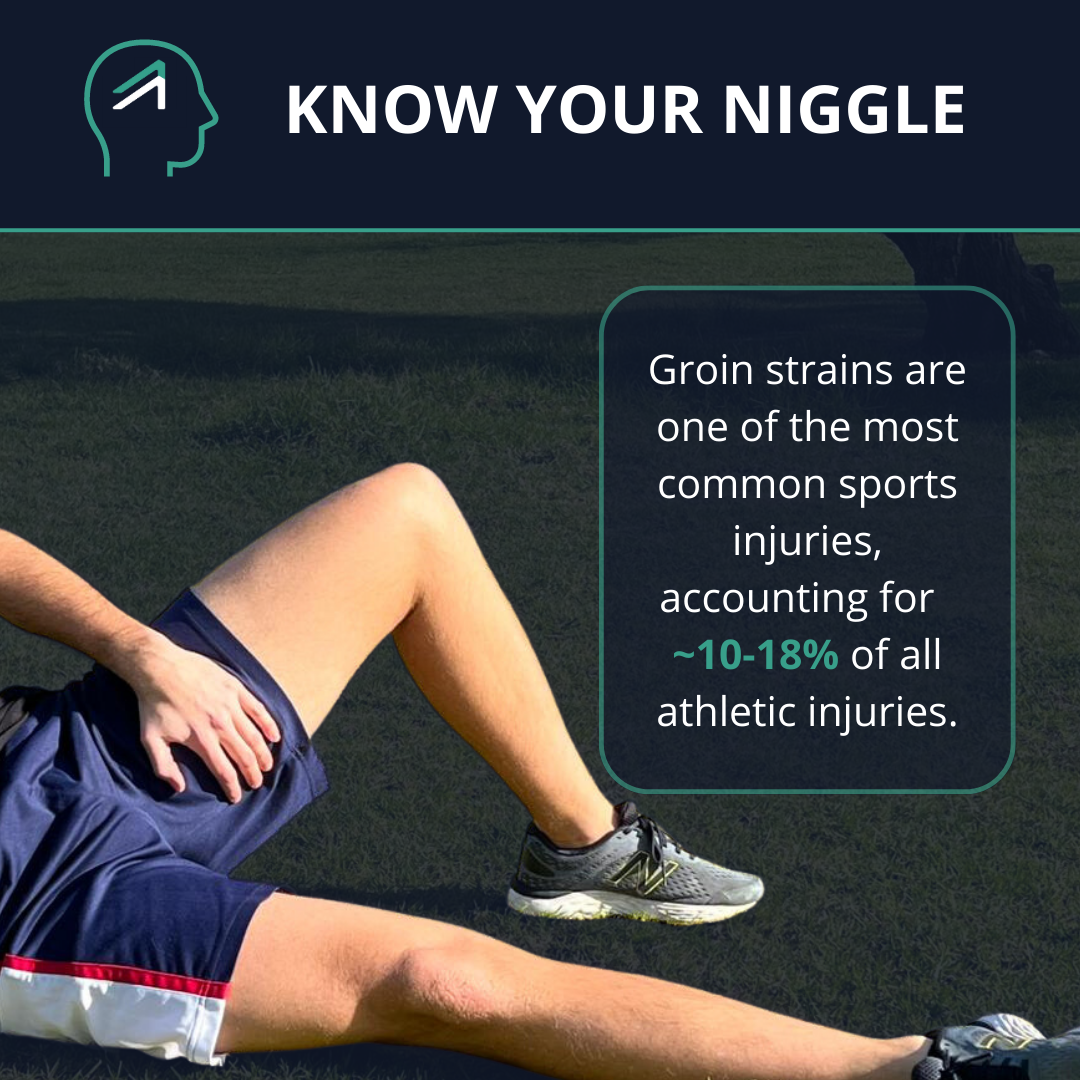Unraveling the Intricacies of Groin Strains with Zlaant

Ever felt that sudden, sharp pain on the inside of your leg while playing sports? You're not alone! Groin strains, also known as adductor strains, can be a real pain in the leg. But fret not, in this comprehensive guide to groin strains, we will take your through common causes and symptoms, as well as key tips to help you prevent and manage it. When equipped with knowledge, and the right tools, groin strains can become a concern of the past.
What's a Groin Strain Anyway?
Groin strains, also known as adductor strains, occur when the adductor muscles experience sudden, excessive force or overstretching, resulting in micro-tears in the muscle fibers. These injuries are often seen in sports players due to the dynamic movements involved, such as quick starts, explosive changes of direction, kicking movements, and sideways shuffling. The adductor muscles work hard to bring the legs together during these activities, and are one of the key muscle groups in generating kicking power, making them vulnerable to strain. The adductor muscles consist of several types, including the adductor longus, adductor brevis, adductor magnus, and gracilis. Among these, the adductor longus is the most commonly injured, as these muscles work tirelessly to stabilize and control movements, contributing to your overall lower body strength and stability.
How do I know if I have a Groin Strain?
If you experience a sudden, sharp pain in your groin while playing sports like tennis or when engaging in any rapid or powerful movements such as kicking, you might be dealing with a groin strain. The pain is often accompanied by bruising and swelling, and you may find it challenging to bear weight on the affected leg. To avoid exacerbating the injury, it's essential to stop exercising immediately and seek medical attention promptly. With the right guidance and support, including Zlaant's expert programs, you can confidently recover and get back to your favourite activities.
What can put me at risk?
- Overexertion & Sudden Intensity: Pushing your body beyond its limits, or abruptly increasing intensity, stresses the adductors, elevating strain risk.
- Inadequate Warm-Up: Skipping or inadequate warm-ups leave adductors unprepared, raising susceptibility to strains.
- Poor Conditioning: Weak, inflexible adductors from poor conditioning heighten strain risk, particularly during sideways movements or kicking.
- Lack of Stretching: Infrequent stretching reduces adductor flexibility, increasing susceptibility to over-stretching and micro-tears.
- Improper Technique: Incorrect sports/exercise form strains adductors, especially noticeable during kicking movements.
Preventing Groin Strains
Prevention is better than cure, Zlaanter! Avoid those pesky groin strains with some simple tips:
- Warm-Up: Prioritize dynamic warm-ups targeting the adductors to prepare them for sports, reducing strain risk.
- Regular Stretching: Stretch adductors to enhance flexibility, reduce tightness, and bolster strain resistance.
- Cross-Training: Balance workouts, avoiding adductor overloading, allowing proper rest to prevent strain.
- Technique Focus: Maintain correct form, especially during rapid and explosive movements, reducing adductor stress.
- Strengthen Adductors: Incorporate specific exercises to enhance adductor strength, boosting resilience. Consider incorporating eccentric exercises to both strengthen and stretch.
Mastering the Groin Strain Gameplan:
If a groin strain sneaks up on you, don't worry here are some key tips to guide your rehabilitation.
- Gradual Return to Activity: When recovering from a groin strain, gradually reintroduce sports activities and exercises. Start with low-intensity movements and slowly increase the intensity and duration over time to allow the adductor muscles to heal and adapt.
- Targeted Rehabilitation Exercises: Work with a qualified healthcare professional or utilize expert programs like those provided by Zlaant to incorporate targeted rehabilitation exercises for the adductors, strengthening the muscles and tendons and aiding recovery. Incorporate proprioceptive training with the ZlaantBoard for neuromuscular conditioning, to improve control and balance, key roles of the adductor muscles.
- RICE Method: Employ the RICE method (Rest, Ice, Compression, Elevation) to manage inflammation and swelling in the affected area. Rest allows the muscles to heal, applying ice can reduce swelling, compression helps provide support, and elevation assists in reducing fluid buildup.
- Gentle Stretching: Gradually introduce gentle stretching exercises to improve flexibility and prevent muscle stiffness. Perform these stretches after the acute phase of the injury under the guidance of a qualified healthcare professional or physiotherapist.
Remember, each person is unique, so if you're unsure about your injury, never hesitate to seek advice from a healthcare professional. Together, let's face Groin Strain head-on! Use it as a signal to tune into your body, identifying and addressing biomechanical imbalances and improper technique. Prioritize lower limb muscle strengthening and embrace Zlaant's ethos - patience, consistency, and quality of movement.
By integrating these strategies into your recovery, you'll conquer Groin Strain and emerge stronger, more agile, and resilient. The journey to an active life may have bumps, but armed with knowledge, tools, and the right mindset, no obstacle is insurmountable.
Helping you get back out there - Zlaant
Note: This blog post is for informational purposes only and does not replace medical advice. If you're experiencing persistent or severe pain, consult with a qualified healthcare professional.
